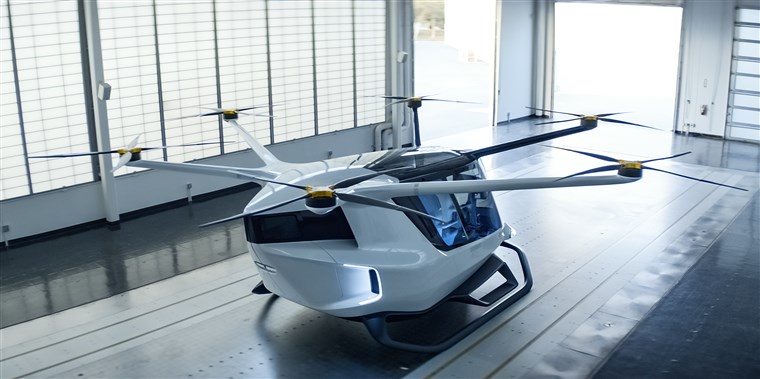The new vehicles could be in production in the United States by 2021, but would need FAA approval.
Your daily commute may be about to take to the skies.
More than 100 electric air taxi designs are already in the works for short hops in cities, including the Airbus Vahana, the German Volocopter, and Uber’s Elevate project. But now, a new design aims to rise above the others with its use of hydrogen fuel cells instead of batteries to power longer flights that can carry more weight.
Hopkinton, Massachusetts-based Alaka’i Technologies says hydrogen fuel cells will give its six-rotor Scai air taxi greater range and lifting power than competitors using batteries, which could open up new opportunities to fly people and other payloads.
The company recently unveiled a mockup of the Scai air taxi in Los Angeles, and says it will soon start tests on a flying prototype.
The new vehicle could be in production in the United States by 2021, although it will need approval from the Federal Aviation Administration.
Alaka’i president Brian Morrison said the Scai could fly five people or 1,000 pounds of cargo up to 400 miles — between two and four hours of flight, depending on the size of the aircraft’s fuel tank.
Most battery-powered air taxi designs only have enough power to carry two passengers for around 15 minutes before needing to be recharged. “So we can carry two and a half times as much payload, and carry it for eight times as long,” Morrison told NBC News MACH.
The greater range and power means the Scai could fly between nearby cities, instead of just on short trips within a city, and could take on air ambulance work, freight deliveries or disaster relief tasks, he said.

COMMENTS